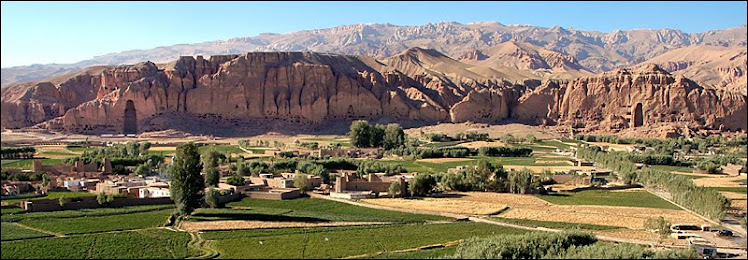The karez system has the advantage of being relatively immune to natural disasters (such as earthquakes and floods) and human destruction in war. Further it is relatively insensitive to the levels of precipitation; a karez typically delivers a relatively constant flow with only gradual variations from wet to dry years.
To make a karez, one needs a source of water, such as a well, an underground reservoir or a water-bearing geological layer, a tunnel is cut to the farm or village that needs the water. The trick is to make the angle of the karez not too steep, because in that case, the water will grind itself down into the bottom and create pools that will make the karez collapse; on the other hand, if the angle is not steep enough, the water will be tainted. In some Karez where the gradient was high, the water flow has been slowed down by building weirs inside the channel or even by constructing underground mill. The builders of the Karez (‘muqannis’) therefore had to be brilliant surveyors and engineers.
The length of a Karez is punctuated with access shafts, which are added for three reasons: as an air supply, to allow the removal of sand and dirt, and to prevent the tunnels from becoming dangerously long. The shafts are not very far apart, and as a result, a karez seen from the air gives the impression of a long, straight line of holes in the ground - as if the land has been subjected to a bombing run. The shafts can be between 30 meter to 1 km apart, although in some rare cases they can be up to 3km apart. The shafts usually range from 20 to 100 meters in depth.
Typically, the karez becomes a ditch near its destination; in other words, the water is brought to the surface by leading it out of the slope. The Karez therefore creates an artificial artesian well and oasis at the point at which it emerges. Fields and gardens are located both over the karezes a short distance before they emerge from the ground and after the surface outlet. Water from the karezes defines both the social regions in the city and the layout of the city. The water is freshest, cleanest, and coolest in the upper reaches and more prosperous people live at the outlet or immediately upstream of the outlet. Downstream of the outlet, the water runs through surface canals called jubs (jūbs) which run downhill, with lateral branches to carry water to different areas.
History
The Qanats are called Karez (rhymes with "raze") in Dari (Persian) and Pashto and have been in use since the pre-Islamic period. It is estimated that more than 20,000 karezes were in use in the 20th century. The oldest functional Kariz which is more than 300 years old and 8 kilometers long is located in Wardak province and is still providing water to nearly 3000 people. The incessant war for the last 30 years has destroyed a number of these ancient structures. In the troubled times maintenance was not always possible. To add to the troubles, as of 2008 the cost of labour has become very high and maintaining the Karez structures is no longer possible. Lack of skilled artisans who have the traditional knowledge also poses difficulties. A number of the large farmers are abandoning their Kariz which has been in their families sometimes for centuries, and moving to tube and dug wells backed by diesel pumps. However, the government of Afghanistan is aware of the importance of these structures and all efforts are being made to repair, reconstruct and maintain (through the community) the kariz. The Ministry of Rural Rehabilitation and Development along with National and International NGOs is making the effort.
There are still functional qanat systems in 2009. American forces are reported to have unintentionally destroyed some of the channels during expansion of a military base, creating tensions between them and the local community. Some of these tunnels have been used to store supplies, and to move men and equipment underground.
links:
http://www.fao.org/english/newsroom/news/2002/8920-en.html
http://mrrd.gov.af/en/page/69
http://www.afghanistan.gc.ca/canada-afghanistan/stories-reportages/kprt-eprk_2009_02_26.aspx?lang=eng&view=d
http://en.wikipedia.org/wiki/Qanat#Afghanistan

No comments:
Post a Comment